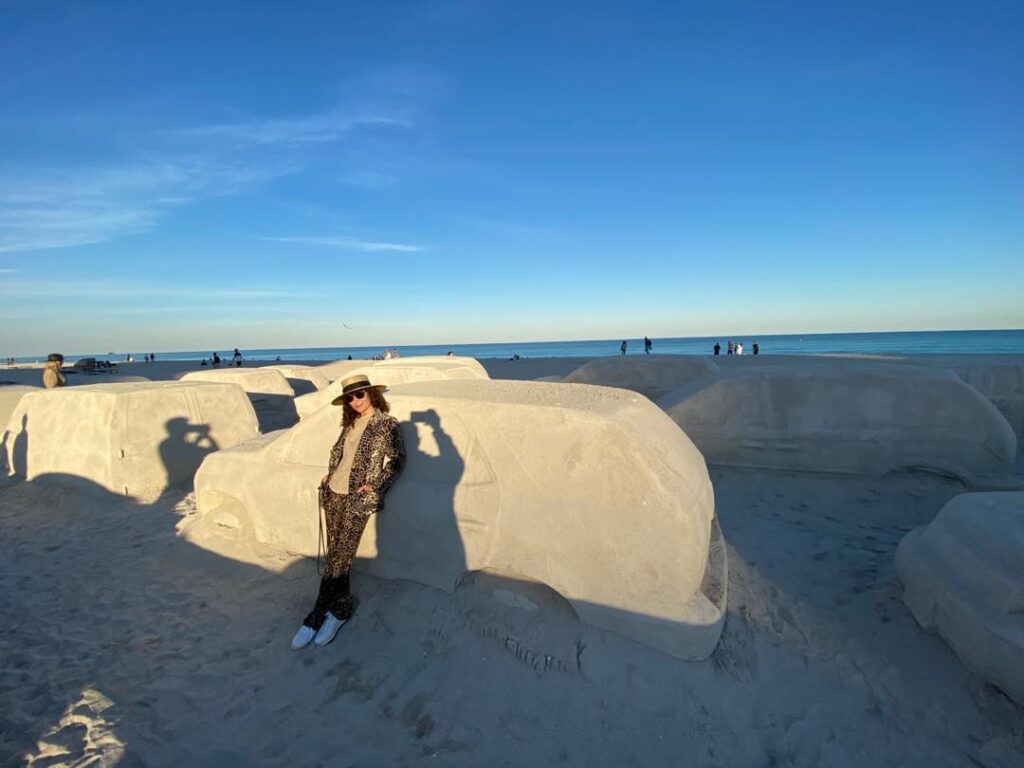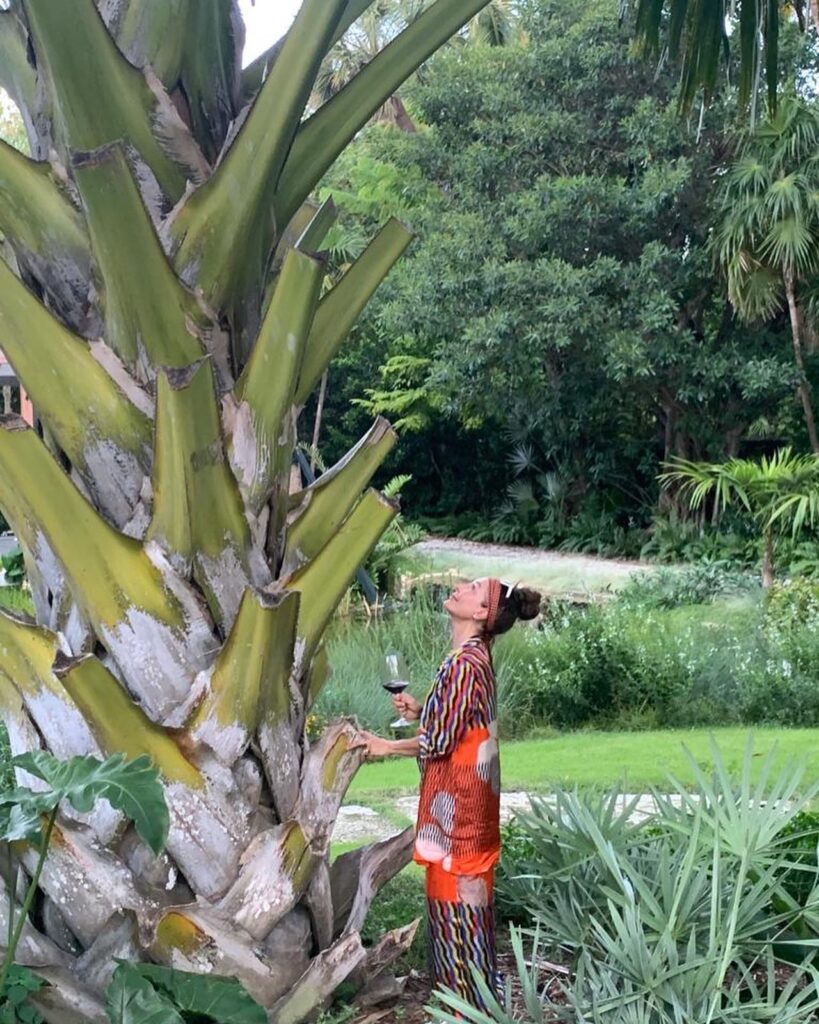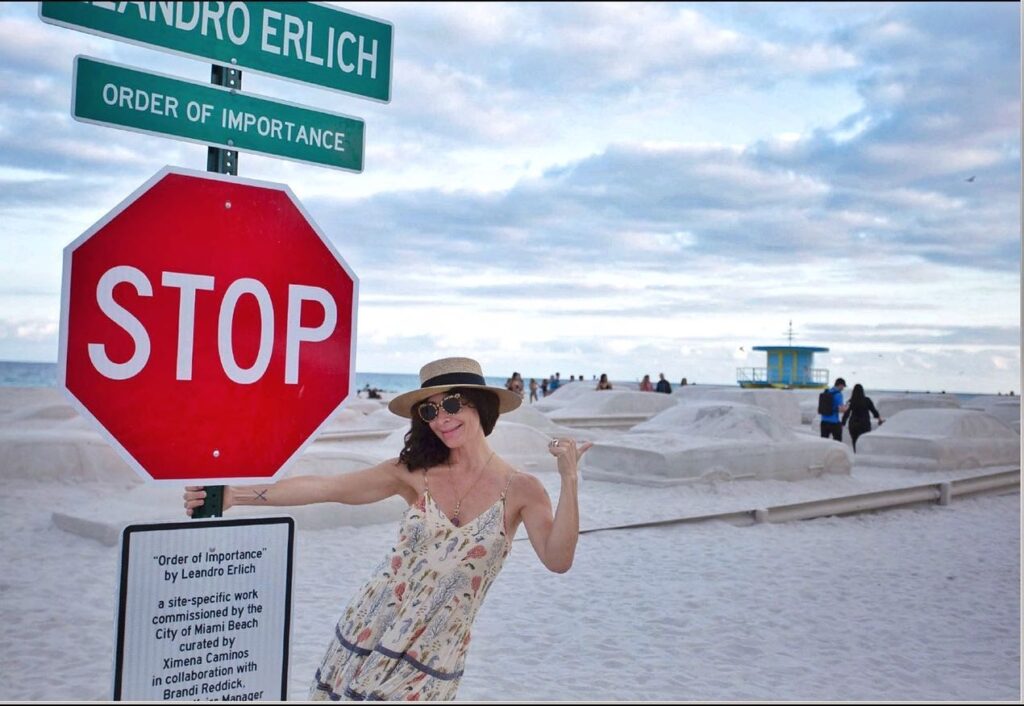Ximena Caminos is Creating Art that Inspires Wonder & Action for Nature in Florida
Creating art that tells a story to reestablish our connection with nature motivates this Wild Floridian to bring her work to new depths — including underwater.

Art. Activism. Awareness. For Ximena Caminos, these three words are her calling.
Originally from Argentina, the internationally renowned curator and artist has brought her unique outlook and passion to Florida, where she is working to preserve the natural beauty throughout the state. Her most recent work, “The ReefLine” right off of Miami Beach (more on that later), underscores the importance of biodiversity and conservation through the visually striking – at times wild – power that only art can deliver.
This interview has been edited for clarity and brevity.
Live Wildly: Let’s start off talking about the ReefLine. What is it, and what was the inspiration behind it?
Ximena Caminos: The ReefLine is a seven-mile underwater eco-sculpture park in Miami that’s free and open to the public. It serves as an artificial reef, which is needed right now for several reasons. One reason is coastal resiliency, but another is that we need something to serve as a marine sanctuary — there is a need for this type of underwater civic infrastructure to protect marine life after the reef heads previously in that area were smothered.
The beauty of it is that it’s visible from the shore — it’s only 900 feet away — so people can see it too. This idea was born in my living room from a conversation with my cofounder, Colin Ford. He was telling me a story about how the city passed an ordinance in 2020 declaring that this was an area where an artificial reef can be deployed. We got to talking about doing really cool art there, an underwater sculpture park with the best artists of the world that could present an artistic solution for helping to address challenges associated with climate change.

LW: Why do you think combining art in Florida with conservation efforts is important? In what way does art position nature differently than other forms of education?
XC: That’s an amazing question. I am not a scientist, and have always been a patron to the arts. Art is such a universal language – and emotional – while science can be very cerebral. Art makes science broader, and it also tells a more compelling story. It makes it sexier; it makes it fun. All of a sudden, a very complicated problem that feels inaccessible becomes more accessible and understandable without such a strong need for an explanation.
I started using the power of art as a tool for a change on topics that are very important and urgent. But that wasn’t enough.
As a curator and as an artist, I want to see how art can actually be the artifact. In the ReefLine’s case, the artwork itself is doing the work — and not just by raising awareness, but by performing what needs to be done. That is something I find very special, and something that is rare. I think that’s what makes the ReefLine so unique — it’s the combination of art, tech and science.
LW: Do you think art helps people see Florida nature – and their role in protecting it – differently? How do you hope to shape the opinions of others through your art?
XC: I think one of the biggest barriers people have in caring for our environment is that it can feel so big – and you don’t know what to do, even though we know there’s so much to be done, and we all have to take action. I find a paradox in an era where we are all so connected through technology, yet we don’t have a common plan for how to save our Mother Earth. I think about that a lot, and hopefully the art helps bring people together towards that goal.
If we do a good job and tell the story properly, people really bond with it. If you can tap into the public sentiment with a good story, further explanation can add but it isn’t necessary. That is the type of art that I try to create: It’s high art but it’s super pop too, something a grandmother and her grandson can both “get” and enjoy. If it’s too conceptual, people can get lost, so I try to use art that is immersive, participatory, accessible, equalitarian — something that everybody can connect too. Otherwise, we add a layer of complexity to something that is already complex.
So igniting the imagination is very important. It starts because people are curious, and they engage when something entices their mind in a fun way. We’re all wonderers, and if you create something that has this aspect that is intriguing or beautiful, you just naturally tend to gravitate towards that. As humans, we’re curious and we love beauty, and so with art we work with that to engage people so much easier.

LW: Putting the art aside, what does wildlife and green spaces mean to you?
XC: Growing up on a ranch in Argentina, I was lucky — nature was all around us and always such an inspiration. Nature is such a master and teacher. In that way, Florida is so blessed. Nature weaves across the state — nature is very strong here.
As I continued to grow up and became conscious, I found a purpose in being a connection, a bridge between us and our civic responsibilities and nature, showing how we can all do something about it.
LW: What do you want people to know about the Florida Wildlife Corridor? What does it mean to you?
XC: In the Corridor itself, I go on walks and am in awe of the amount of wildlife that’s there. It really feels wild. On walks, I watch for whatever appears there and feel that energy.
What the organizations supporting the Florida Wildlife Corridor have been able to achieve is so impressive and important. I really take my hat off to them to see how much they have managed to protect, and how to lead by example — and to show that it’s doable. A 501(c)3 can’t do it alone: We all need to come together to protect the Corridor, and it’s a mix of government, corporate and individuals. This convergence of what they’ve been able to bring together is the scale and pace that we all need.
I think that the Florida Wildlife Corridor is our sister above ground, with the ReefLine being underwater. The Wildlife Corridor is the green veins that will keep our planet and its environment connected. These are the types of projects that ground us.

LW: How do you “Live Wildly” in your daily life?
XC: My WhatsApp says “Stay true, wild soul,” so to me to “Live Wildly” means to stay connected to wilderness and to not lose it — and I fear we are losing it. There is such a disconnect between nature and us. There are so many layers and interfaces that are detaching us from the source; wilderness is the source, it’s the purest sense of everything — of who we are, of the planet, of the universe. It’s the source of the qualities that we need to strive and survive. To “Live Wildly” means don’t lose touch. Nature is the biggest master and healer, so “Live Wildly” by living in connection to nature.
By helping people see the environment that surrounds them through a new perspective, Caminos is hoping to not just intrigue, but motivate and inspire others to value — and protect — Florida’s natural wonders. Check out Caminos’ Instagram page for more of her wild art adventures!
“Wild Floridians” is a monthly original series that highlights Floridians across the state who embody the Live Wildly spirit and support conservation in unique ways. Do you know a Wild Floridian? Submit them for consideration here!

